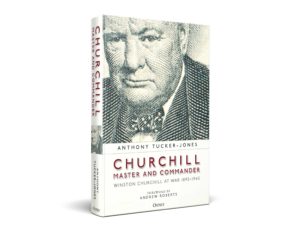Finest Hour 164
Books, Arts & Accomplishments – The Mary Soames Canon 1979-2011 FINEST HOUR’S REVIEWS OF ALL HER BOOKS – Lady Soames Takes on the Brush

Winston Churchill, Parliament Square, London © Sue Lowry & Magellan PR
February 11, 2015
Finest Hour 164, Special Edition, September 2014
Page 22
By Merry N. Alberigi
Winston Churchill: His Life as a Painter. HarperCollins / Houghton Mifflin, 1990, 256 pages.
Only two previous books were published on Churchill’s paintings, one of them by himself, yet painting was a vital element over half his life. His artistic talent emerged at age 40, following his dismissal from the Admiralty during the Dardanelles crisis in 1915. Painting distracted him from despair then, and became his faithful companion for more than forty years.
Mary Soames chronicles this very personal aspect of her father’s story as only she could, by weaving his hobby of painting into his life as a statesman, husband and father. He lived in another time of world wars, of house parties, of trips abroad for one’s health, aspects she brings alive, as for example after his loss in the 1945 election: “Those who have neither experienced nor witnessed it cannot imagine the void which opens under the feet of a politician removed from power.”
Skillfully deploying the words of her parents, their friends and herself, the author displays an easy, organized style, deftly tying together her diary entries with numerous personal anecdotes. The book begins in May 1915 when, dismissed, shattered and depressed, he turned to oils to combat his demons. Over the next forty-five years Churchill was to paint more than 500 oils, half of them during the 1930s, which Lady Soames considers the peak of his skills.
While his principal theme was landscapes, she writes, sometimes the weather would dictate still lifes to be painted indoors. “Bottlescape,” one of the best of these, hangs at Chartwell, and several others are shown in this profusely illustrated book with its brilliant color plates. The author judges his floral paintings especially successful because he “fully captured the ‘personalities’ of his subjects.” To her own appraisals are added those of his many artist friends.
Churchill was particularly intrigued by the play of light and shadow and was drawn to strong, bright colors. Thus he found great enjoyment on the French Riviera and in Marrakesh, Morocco. His daughter accompanied him on many of these trips, sometimes as his aide-de-camp, and her stories are of holidays that “flowed in an agreeable sequence of painting sorties.” On his return home, he “would line up all the canvases he had painted around the room, usually standing on the floor and leaning against the furniture. Then he would make my mother sit next to him and show them to her, explaining where each picture had been painted and any problems he had had with it; other members of the family, and guests, would also be welcome at this ‘exhibition’ of his works.”
Though his art enjoyed praise from family and friends, Churchill himself was “genuinely unconceited about his efforts.” She cites several instances of his exhibiting his work anonymously or under a pseudonym.
This book’s strength lies in careful editing: the author provides a good sense of time and place, and wisely includes events that had a direct bearing on her father’s painting. So as not to disturb the book’s continuity, she uses endnotes and footnotes to add the background of people discussed. These include the many professional painters he called friends, and who filled a dual role as mentors and instructors. One of the most important was William Nicholson, whom Clementine admired, writing WSC: “I love to think of you painting sparkling sun-lit scenes….Are you keeping them cool & pale a la Nicholson?” Winston responded: “I have painted four pictures…[one], a la Nicholson—v[er]y luminous. It is the best I think I have yet done.”
These pages offer invaluable historical material, including a fascinating list of where the paintings hang today, who owned the grand homes where Churchill painted, and what relationship he had with his hosts. The sixty exacting color reproductions, chosen to illustrate his themes, techniques and variety, are proof of his expertise. With their large format and high quality one can fully appreciate the intensity of colors and recognize the texture and brush strokes.
The American dust jacket bears the same painting (“Green Trees and Poppies at Lullenden”) as the original jacket of Peter Coombs’s Churchill: His Paintings; the British jacket has a fine photo of Churchill painting in France in 1939, which is more distinctive. Inside are the same finely printed pages, adding much to Lady Soames’s father’s life that only she could know, exposing an unusual side of the great man with a fine appreciation of the vital role painting played in his life.
Ms. Alberigi was a Governor of The Churchill Centre and chaired two outstanding conferences, San Francisco in 1990 and Washington in 1993. This review is reprinted from FH 69, Winter 1990-91.
Subscribe
WANT MORE?
Get the Churchill Bulletin delivered to your inbox once a month.






